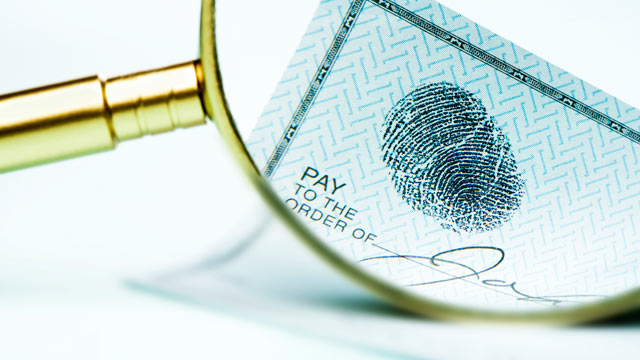Checks are used extensively in the modern world for transfer of money. Checks can vary from any amount, and this flexibility allows it to be used throughout the world as a preferred mode of payment. However, at least in the United States, it is also the subject of one of the most reported cases of fraud. Fake checks are a big problem, and most of the people rarely pay any attention while accepting them. It is always advisable to know the indications that determine whether or not the check is a real one, as it might help you avoid any check related frauds in the future. These frauds can lead to loss of time, money and effort.

There are a variety of ways in which you may determine the originality of the check. Some of them are-
- Examine the edges– Most businesses that use their checkbooks do so often and as a result, the edges get perforated. Run your finger along the edges and feel the roughness on it. If it is not rough to touch and too smooth, there is a probability that it might have been printed using a computer and a printer. Though this test is not so accurate, as the check given to you might be fresh out of a new checkbook, there are more ways to determine fraudulent checks.
- Check for check number– Any legit check will have a registered number by the bank. This is printed on the top right corner of the check. In case the number is missing, the check is most likely a fake. If it is there, match it with the MICR line which is at the bottom of the check. This is the line of numbers which includes the routing number, account number and the check number. Compare both the check numbers and in case they don’t match, the check is a fake.
- Examine the MICR line– MICR stands for magnetic ink character recognition. It is one of the primary indicators of the legitimacy of the check. Run your finger over the link and feel the ink. If it feels embossed and is shiny, the check is a fake. An original check will only bear the MICR line which is dull to look at and smooth to touch. Also, you may go on the Federal Reserve Bank Services site and check with them using the routing number. If it displays some other name than the institution or business you are dealing with, the check is a fake.
- Bank Logo– Check the logo of the bank on the face of the check and look for irregularities. Most fraudulent checks will have a bank logo printed on it, but its quality may differ a lot from the real one. If it seems faded or hazy, the check is most likely a fake one. Also look for the bank’s address and compare it on the internet. If it differs, the check is a fake. Even though people who make fake checks go through extreme detailing, there are always loopholes.
- Feel the paper– The paper used for making these checks is strong and sturdy, and you can immediately tell the difference when you touch a fake. Bend it a little to check the kind of resistance it shows. A smooth, glossy and thin paper indicate that the check is a fake.
You can even wet the tip of your finger and rub it one side of the check. If the color smears, then the check had been printed on a color printer and is a fake. Fraudulent checks can cause a lot of trouble for you. So arm yourself with the knowledge of spotting a fake check when you see one.










Comments are closed.